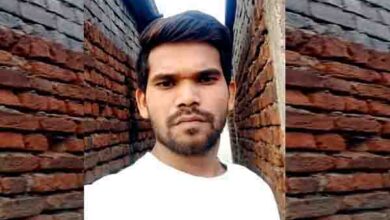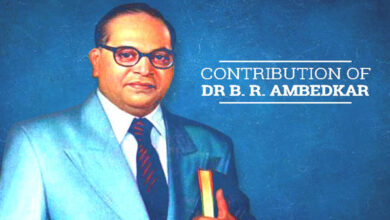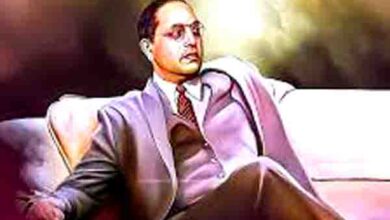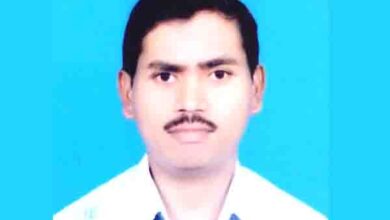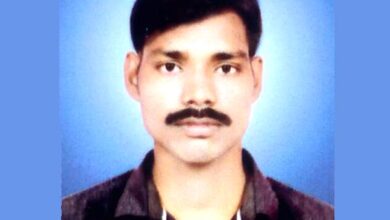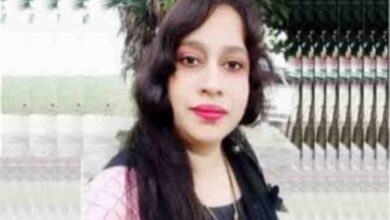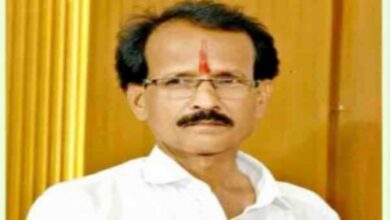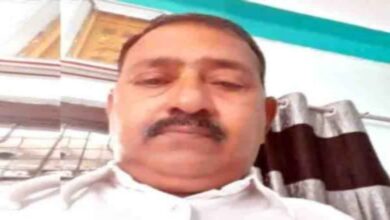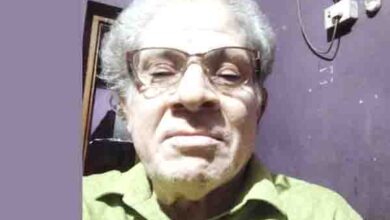बड़वा में हैं अंग्रेजों के जमाने की शानदार चीजें badava mein hain angrejon ke jamaane kee shaanadaar cheejen
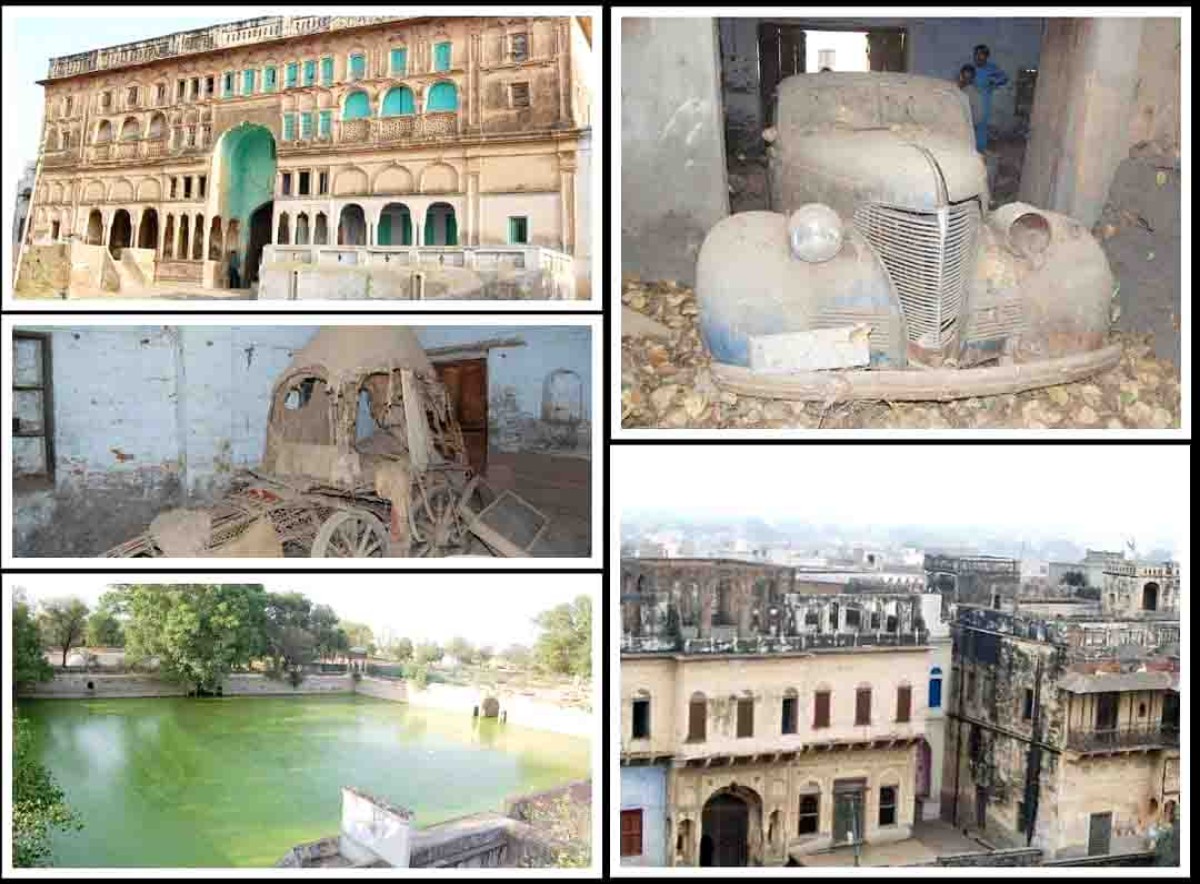

©डॉ. सत्यवान सौरभ
परिचय- हिसार, हरियाणा.
High-rise havelis, beautiful paintings, pond-reservoir, elephant-house, treasury house, main solid gate in the form of armor and do not know what…
South-West Haryana has a vast expanse of arid countryside, adjoining the sandy areas of northern Rajasthan, where a prosperous village called Barwa is situated. It is 25 km south of Hisar on the Rajgarh-Bikaner state highway.
Garh Barwa which is called Thakur ki Garhi (a fort) in the village. An ancestor of Thakur Bagh Singh Tanwar, who was Brijbhushan Singh’s grandfather, came from Jeetpura village in Rajputana 600 years ago to carve out the wealth of this village for himself and his ties. Incidentally, the Tanwar branch of the Rajputs had firmly established themselves in several villages around the city of Bhiwani. As a result, Bhiwani became the head of the Tanwar Khap i.e. a group of villages. In the medieval period, the Tanwar Rajputs, overthrown by the political turmoil of the time when Muslim invaders were in the process of capturing this land and establishing their supremacy, migrated from Haryana and the hilly regions to Himachal Pradesh. However, during the Mughal period, the Tanwar Rajputs traded peacefully in their villages around Bhiwani. The village of Barwa, with a population of about 15,000, is now a part of Bhiwani district.
The ancestors of Bagh Singh Tanwar, who settled in huts around a large natural pond filled with rainwater, occupied 14,000 bighas of land in the village. As a result, much of the land was transferred to their descendants and other communities in the village. The existing Garhi, a massive monument of a medieval style, also called Bransa Bhawan, is situated in the north-west of the village on the bank of a large pond called Ramsar, which was built in 1938, according to the old people of the village Due to failure of monsoon one year, crops could not be grown that year. Hence, Bagh Singh thought of involving his relatives in the construction of the Garhi and found fruitful employment. Built in the traditional architectural style on a sand dune, the fort still has a large and strong gate made of iron plate and wood. Several spacious rooms for housing and public appearance, a row of quarters for the storage of straw and grain were provided by the builders.
High-rise havelis, beautiful paintings, doors decorated with subtle patterns, pond-like reservoir, elephant-house, strong wall of the treasure house, the main solid door in the form of armor and do not know what. These havelis create deep curiosity in the mind. Those who made them spent their ages here. Their graves were built here after their death. We are talking about the village of Barwa, a sub-division located on the national highway.
‘Chandro’ came on the storm
The well located in the south was built by the other sethas here, Tarachand and Hanuman. The sons of Seth Hanuman and Tarachand built an attractive four pillared well at Rushada Johad of the village. Some scenes of the famous Haryanvi film Chandraval and Bairi were filmed around this. Cars and chariots of the British era are still present in the havelis. The historical, cultural and religious heritages existing here are telling the past history of the village. There is no direct proof of the age of the havelis but it is true that it dates back to the Second World War.
British-era carriage and chariot
There are a dozen havelis in Barwa. Among these, the havelis of Seth Parshuram are very famous. Artisans were called from Pilani to get them made. Cars and chariots of the British era are still present in the havelis. More interesting than the havelis, the history of the wells and ponds here is also there. In ancient times there was a small kutcha pond at this place. Often Seth Parashuram’s sister Kesar used to eat cow dung here, which was indecent for him. Hearing the taunts of the people, he got a historic pond constructed instead of the raw pond, which is now identified as Kesar Johad. Some scenes of the famous Haryanvi film Chandraval and Bairi were filmed around this. In ancient times there was a small kutcha pond at this place. In addition to the big havelis of Setho in Badwa village of Bhiwani district, many such depictions have been found in ponds, wells, havelis, nohras, dharamshalas, chhatris etc. These paintings were found to have features similar to those of Rajasthan.
Kesar pond built by Seth Parashuram-
This pond was built by Seth Parashuram in the memory of his sister, it is said that Seth Parashuram got the saffron pond constructed here, which has been a major attraction for the travelers. It is said that Parashurama’s sister used to eat cow dung. It was a matter of shame for the Seth family and people often taunted for such a small act, then Seth got the pond present here paved and named it Kesar Talab. This pond was used for daily activities. It has a deep water tank in which unhappy women jumped and gave their lives, hence it is also called Mukti Dham. The people here also call it Agaur. There are domes / chhatris on the roof above the banks of this pond, in which Radha Krishna’s Rasleela is prominently depicted through paintings. In these, Radha Krishna is dancing in a circle holding each other’s hands and behind them the figures of musical instruments are depicted like dholak, nagade, flute, harmonium, shehnai etc. And it’s probably porting some function. The paintings have dynamism and rhythm. Reddish brown color has been used.
Shri Krishna is shown in blue color while Radha’s complexion is shown as fair. Animal birds are shown behind these figures, including peacocks, parrots, birds etc. Red, yellow, blue colors have been used in this. The center of the dome has a circular geometric ornamentation. The shapes of the domes are shown in motion and in equal proportion. He has a small stature and a round face. With the passage of time, today their colors have faded, but the flowers in the center still hold their past.
Seth Hukum Chand Lala Sohan Lal Ki Haveli-
This mansion is about one and a half hundred years old from today, at the main entrance of which a strong elephant is shown in a well-equipped and dynamic state. The back of this elephant is a quadrilateral geometric design cloth and wooden saddle has been decorated on it, in which the king and queen are facing each other and the servant is carrying the chawar behind. In this, the king is expressing his love by giving flowers to the queen. A square geometric shaped cap has been placed on the saffron elephant which is enhancing its beauty. Apart from this, there is a religious picture on the wall like Vishnu ji is seated on his ride with Lakshmi and in the second picture Sherawali Mata is seated on her ride. Apart from this, the picture here is showing the love meeting of Radha Rani. The elephant is depicted more in the Kota style.
Seth Laxmichand’s Kathara-
Inside Laxmi Chand’s Katra in Barwa, kings-maharajas and gods and goddesses are depicted together on the ceiling. In this picture from the left side is shown the ride of Radha Rani who is on the chariot and some women are walking behind the chariot who appear to be her servants. A horseman is carrying the state mark in one hand and the other horseman is following behind who is the bodyguard of the Maharaja and is ensuring security. Krishna making Radha’s Peak – In this picture Krishna ji is seated on a chair and Radha is sitting on the pedestal. Krishna is kneading Radha’s braid and Radhika is holding a mirror in her hand. Radha’s face is clearly visible in the mirror. The local influence is seen on this picture from the chair and the turn shown in this picture and Rajasthani influence is visible from the dress.
In this way, the paintings of the painter reflect the then influences which he saw and painted at that time. In this picture, the eyes are shaped like a fish, the Mughal influence is seen in the depiction with the crest and the crown. The background is pale yellow and the body is shown to be slender and tall, while the hair is short in proportion to the body. On the other hand the ride of deities is coming from right to left. In which all the deities are sitting on their respective vehicles and it seems as the king and queen are coming on their chariot to welcome the deities. In these paintings, elephants, horses etc. have been decorated very well. Their background is of yellow color and colors like blue, yellow, green, brown, etc. have been used in the paintings. Looking at the clothes and ornaments of the paintings, Mughal and Rajasthani influence appears on them.
.Lala Lakram Phoolchand’s Haveli-
This haveli is about 160 years old, the upper part of the verandah wall of this haveli depicts the soldier. In this a person is riding on a horse and three soldiers are running back and forth in a row and five soldiers are running parallel. Its background is yellow. This soldier seems to be in full swing.
Haveli of Tularam Lala Dungarmal-
This mansion remains from today, about 100 years ago. On its outer wall, a railway engine is shown with coaches. The engine color is black and the coaches are painted blue. A lattice has been made in the upper part of the window of the train in which passengers are shown and smoke is coming out of the engine. A natural view is also shown behind the trains. On the other hand the driver of Laxmichand is driving the train in Katra, which is very attractive and beautiful, in which 13 coaches and one engine are shown. Passengers are also depicted in this car and Outside it stands a man with a flag in his hand, acting as an indicator for the vehicle.
Seeing this, it seems that this picture has been painted of the first train run by the British in India in the 19th century. This picture is explaining the living arrangement of that time. Postman’s picture – Here a picture of a postman is painted on a wall and there seems to be something written on it in English language, which is the effect of this style. having effect. Seeing clothes, shoes etc., further reinforces the influence of company style on these.
Yashoda Krishna’s picture-
In this picture Yashoda Maiya is holding Krishna in her lap and it is depicting motherhood. In this picture the face is small while the body is strong, the eyes are almond-like and the face is round and the eyebrows are thick. The head is covered with a kerchief, which shows the Mughal influence. If we look at the clothes, the Rajasthani influence is visible from the clothes.
Picture of Krishna and Kaliya Nag-
In the picture Krishna is shown performing his pastimes on a serpent. Shri Krishna is playing the flute and both his and the snake goddesses are standing in a special posture, the lower part of which is shown in the form of a snake and from the top in the form of Nag Devi. That is, Ardha is present in the form of Nageshwari, who is standing in the state of pleading with folded hands facing Krishna. In this picture a spectacle is depicted in the shape of faces. Eyes are like Pisces which is in Jaipur style. The influence of Nathdwara style is prominently shown on the whole painting.
Picture of Saraswati Devi sitting on a swan
In this picture Saraswati Devi is seated on a swan and there is a garland in the mouth of the swan, here a spectacled face is shown in a painted state. A strand of hair of Saraswati Maa is lying on her face near her ear. Saraswati Maa holds a book in one hand and flowers in the other hand which are painted in green colour. In this picture, the woman behind looks like a chanwar jhula. It seems to have a mixture of both Rajasthani and Mughal influences.
The painter has made a distinction within the images according to his own understanding. According to Hindu myth, Goddess Saraswati is considered the goddess of learning and culture. Saraswati is mentioned in the Rigveda as a holy river. Saraswati is shown as a swan. The images of Goddess Saraswati are available to us in the form of murals in the buildings and residential buildings built at many Hindu places of faith in Haryana.
construction of mansions
Artistry in murals, murals were found on many old havelis in villages falling under Bhiwani district, the construction of these havelis is believed to be about 100-150 years ago. These havelis have been built by the masons of the potter caste with lakhori bricks. Lime was used for wall decoration. Thousands of murals were found on these havelis. In these paintings, events related to mythological subjects, Mahabharata, Ramayana, Radha Krishna Leela, animal birds, social activities and other mythological stories have been depicted prominently. Apart from this, the glory stories of the kings of that period were beautifully depicted. Not only important events, episodes, characters, etc. characters of Leela were depicted through these pictures. He worshiped Radha Krishna in abundance and Ganesha with Riddhi Siddhi.
Pictured at the entrance of the door or in the middle of the todos outside the mansions. The main subjects of Patna and Company style were portraits of people, animals and birds and portraits of ordinary people, mainly elephants and horses or their riders were marked in animals.
influence of styles
The influence of the Shekhawati style is visible in these paintings and they are not untouched by the Mughal style because the influence of the Mughal style has been in the surrounding areas of Delhi, it has expanded greatly in the surrounding areas. But in spite of this, the traditional style is also dominated here. Somewhere in these pictures, there seems to be a dominance of efficiency and sometimes there is a lack. But still it has been able to express its expressions. Their quality and subject matter have been impressive. Today, due to lack of care, due to lack of care and not using them properly, many paintings have been destroyed from these havelis or the layer of smoke has accumulated and due to this the paintings have lost the brightness of the colors but are present on the inner walls. The paintings are preserved in their original condition due to being saved from the sun and rain.
Who established Barwa village
Thakur Bagh Singh Tanwar, who settled the village of Barwa, belonged to the Rajput clan, probably because the Chitre who painted the havelis of this village came from the Rajput region. The influence of Rajputana traditions and their lifestyle is visible on these paintings. The influence of Rajput and royal clothes is visible on the paintings of the havelis. The princes used to keep animals like parrot, elephant, horse, camel, etc. as pets and probably for this reason they used to paint them in the form of murals. For these dance postures were very suitable, foot postures also have a special place in the paintings of Ajanta.
Many Seth people built havelis to show their splendor, social prestige and depictions were made on those havelis which seem to be somewhat different from the traditional figures and paintings present there. The Thakur ki Haveli in Barwa village (the village citadel) was built by Muslim artisans around 1910 AD, so the paintings here probably reflect the influence of the Mughal style. During that time, various parts of the body and proportions of the landscape were not taken care of in the folk style.
efforts to preserve the heritage
Satyavan Saurabh, a young dohakar of the village, told that he has written to the government many times for the maintenance of the havelis. For the last two decades, he has been continuously writing articles on the valuable cultural heritage of the village, so far neither the government nor the ancestral owners of these havelis have taken any positive steps for their maintenance. Satyavan Saurabh also told that the officials of the heritage department of Kurukshetra University are in constant touch with him when their ancestral owners agree to save them so that they can be kept in the museum officially so that the coming generations can see them!
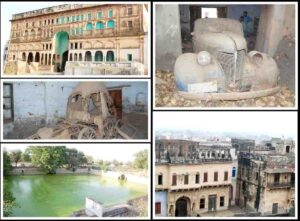
Great things of British era are in Barwa

Dr Satywan Saurabh
गगनचुंबी हवेलियां, मनमोहक चित्रकारी, कुंड रुपी जलाशय, हाथीखाने, खजाना गृह, कवच रुपी मुख्य ठोस द्वार और न जाने क्या-क्या …
दक्षिण-पश्चिम हरियाणा में शुष्क ग्रामीण इलाकों का विशाल विस्तार है, जो उत्तरी राजस्थान के रेतीले क्षेत्रों से सटे हुए है, यहाँ बड़वा नामक एक समृद्ध गांव स्थित है। यह राजगढ़-बीकानेर राज्य राजमार्ग पर हिसार से 25 किमी दक्षिण में है।
गढ़ बड़वा जिसे गाँव में ठाकुरों की गढ़ी (एक किला) कहा जाता है। ठाकुर बाग सिंह तंवर के पूर्वज, जो कि बृजभूषण सिंह के दादा थे, ने 600 साल पहले राजपुताना के जीतपुरा गाँव से आकर अपने और अपने संबंधों के लिए इस गाँव की संपत्ति की नक्काशी की थी। संयोग से, राजपूतों की तंवर शाखा ने भिवानी शहर के आसपास के कई गाँवों में खुद को मजबूती से स्थापित किया था। नतीजतन, भिवानी तंवर खाप का प्रधान बन गया यानी गाँवों का एक समूह। मध्ययुगीन काल में, तंवर राजपूतों ने उस समय की राजनीतिक उथल-पुथल से उखाड़ फेंका जब मुस्लिम आक्रमणकारी इस भूमि पर कब्जा करने और अपना वर्चस्व स्थापित करने की प्रक्रिया में थे, हरियाणा और पहाड़ी क्षेत्रों से हिमाचल प्रदेश में चले गए। हालांकि, मुगल काल में, तंवर राजपूत शांतिपूर्वक भिवानी के आसपास अपने गाँव में व्यापार करते थे। लगभग 15,000 की आबादी वाला बड़वा का गाँव, अब भिवानी जिले का एक हिस्सा है।
बाग सिंह तंवर के पूर्वजों, जिन्होंने बारिश के पानी से भरे एक बड़े प्राकृतिक तालाब के आसपास झोपड़ियों में बसे थे, ने गाँव में 14,000 बीघा जमीन पर कब्जा कर लिया था। नतीजतन, बहुत सारी जमीन गांव में उनके वंशजों और अन्य समुदायों को हस्तांतरित कर दी गई थी। मौजूदा गढ़ी, एक मध्ययुगीन शैली का एक विशाल स्मारक, जिसे ब्रांसा भवन भी कहा जाता है, रामसर नामक एक बड़े तालाब के किनारे गाँव के उत्तर-पश्चिम में स्थित है, जिसे 1938 में बनाया गया था, जो गाँव के पुराने लोगों के अनुसार था एक साल मानसून की विफलता के कारण, फसलों को उस वर्ष नहीं उगाया नहीं जा सका। इसलिए, बाग सिंह ने गढ़ी के निर्माण में अपने रिश्तेदारों को शामिल करने के बारे में सोचा और उपयोगी रोजगार पाया। रेतीले टीले पर पारंपरिक स्थापत्य शैली में निर्मित गढ़ी में आज भी लोहे की प्लेट और लकड़ी का एक बड़ा और मजबूत गेट है। आवास और सार्वजनिक उपस्थिति के लिए कई विशाल कमरे, पुआल और अनाज के भंडारण के लिए कई तिमाहियों की एक पंक्ति बिल्डरों द्वारा प्रदान किए गए थे।
गगनचुंबी हवेलियां, मनमोहक चित्रकारी, सूक्ष्म नमूनों से सजे कपाट, कुंड रुपी जलाश्य, हाथीखाने, खजाना गृह की मजबूत दीवार, कवच रुपी मुख्य ठोस द्वार और न जाने क्या क्या। मन में गहरी जिज्ञासा पैदा करती हैं, ये हवेलियां। इन्हें बनाने वालों ने उम्र ही यहां बिता दी। इनकी कब्रें मृत्युपरांत यहीं बनाई गईं। हम बात कर रहे हैं राष्ट्रीय राजमार्ग पर स्थित उपमंडल का गांव बड़वा की।
पनघट पर आई थी ‘चंद्रो’
दक्षिण में स्थित कुएं का निर्माण यहां के दूसरे सेठों ताराचंद तथा हनुमान ने करवाया था। सेठ हनुमान व ताराचंद के पुत्रों ने गांव के रूसहड़ा जोहड़ पर चार स्तंभों वाला आकर्षक कुआं बनवाया। इसी के इर्द-गिर्द प्रसिद्ध हरियाणवी फिल्म चंद्रावल और बैरी के कुछ दृश्यों को फिल्माया गया। अंग्रेजों के जमाने की गाड़ी और रथ आज भी हवेलियों में मौजूद हैं। यहां विद्यमान ऐतिहासिक, सांस्कृतिक तथा धार्मिक-धरोहरें गांव के अतीत के इतिहास को बयां कर रही है। हवेलियों की आयु का कोई प्रत्यक्ष प्रमाण नहीं है लेकिन यह सच है कि ये द्वितीय विश्वयुद्ध से पूर्व की है।
अंग्रेजों के जमाने की गाड़ी और रथ
बड़वा में एक दर्जन हवेलियां हैं। इनमें सेठ परशुराम की हवेलियां खासी प्रसिद्ध हैं। इन्हें बनवाने के लिए पिलानी से कारीगर बुलाए थे। अंग्रेजों के जमाने की गाड़ी और रथ आज भी हवेलियों में मौजूद है। हवेलियों से भी बढ़कर रोचक इतिहास यहां के कुओं तथा तालाबों का भी है। प्राचीन समय में इस स्थान पर एक छोटा सा कच्चा तालाब था। अक्सर सेठ परशुराम की बहन केसर यहां गोबर चुगती थी जो उनके लिए अशोभनीय था। लोगों के ताने सुनकर उन्होंने कच्चे तालाब की जगह एक ऐतिहासिक तालाब का निर्माण करवाया जिसकी पहचान अब केसर जोहड़ के रूप में होती है। इसी के इर्द-गिर्द प्रसिद्ध हरियाणवी फिल्म चंद्रावल और बैरी के कुछ दृश्यों को फिल्माया गया। प्राचीन समय में इस स्थान पर एक छोटा सा कच्चा तालाब था। भिवानी जिले के बड़वा गांव की सेठो की बड़ी-बड़ी हवेलियों के अलावा, तालाब, कुँवें, हवेलियां, नोहरा, धर्म शालाएं, छतरियां आदि में, अनेकों ऐसे चित्रण मिले हैं। इन चित्रों में राजस्थान के चित्रों जैसी विशेषताएं पाई गई।
सेठ परशुराम द्वारा निर्मित केसर तालाब-
यह तालाब सेठ परशुराम ने अपनी बहन की यादगार में बनवाया, कहा जाता है कि सेठ परशुराम ने यहाँ पर केसर तालाब का निर्माण करवाया जोकि यात्रियो का प्रमुख आकर्षण केंद्र रहा है। ऐसा कहा जाता है परशुराम की बहन गोबर चुगती थी। यह सेठ परिवार के लिए शर्म की बात थी और लोग अक्सर ऐसा छोटे कार्य के प्रति ताने मारते थे तब सेठ ने यहां पर मौजूद तालाब को पक्का करवाया और उसका नाम केसर तालाब रखा। इस तालाब का प्रयोग दैनिक क्रियाकलापों के लिए इस्तेमाल होता था। इसके पास एक गहरा जल कुंड है जिसमें दुखी महिलाऐं कूदकर अपनी जान दे ती थी, इसलिए इसको मुक्ति धाम भी कहा जाता है। यहां के लोग इसे आगौर भी कहते हैं। इस तालाब के किनारे के ऊपर की छत पर गुंबद/छतरियां बने हुए हैं जिनमें राधा कृष्ण की रासलीला को चित्रों के माध्यम से प्रमुखता से दर्शाया गया है । इनमें राधा कृष्ण एक दूसरे का हाथ पकड़े घेरे में नृत्य कर रहे हैं और इनके पीछे वाद्य-यंत्रों की आकृतियां चित्रित की गई है जैसे ढोलक, नगाड़े, बाँसुरी, हारमोनियम, शहनाई आदि। और यह शायद किसी समारोह को चित्रित कर रहा है । चित्रों में गतिशीलता और लय है। लाल भूरे रंग उपयोग किया गया है।
श्रीकृष्ण को नीले रंग में दिखाया गया है जबकि राधा का रंग गोरा दिखाया गया है। इन आकृतियों के पीछे पशु पक्षियो को दिखाया गया है, जिनमें मोर, तोता, चिड़ियां आदि है। इसमें लाल, पीले, नीले रंग का इस्तेमाल किया गया है। गुंबद के केंद्र में वृत्ताकार ज्यामितीय अलंकरण किया गया है । गुंबंदों की आकृतियों को गतिशील और समान अनुपात में दिखाया गया है। इनका छोटा कद व चेहरा गोल है। समय के अनुसार आज इनके रंग धूमिल पड़ गए हैं परन्तु केंद्र में फूल आज भी अपने अतीत को समाए हुए हैं।
सेठ हुकुम चंद लाला सोहन लाल की हवेली-
यह हवेली लगभग आज से डेढ़ सौ साल पुरानी है, जिसके प्रमुख द्वार पर एक हष्ट-पुष्ट हाथी को सुसज्जित एवं गतिशील अवस्था में दिखाया गया है। इस हाथी की पीठ एक चतुर्भज ज्यामीतिय डिजाइन का कपड़ा एवं उस पर लकड़ी की काठी को सुसज्जित किया गया है, जिसमें राजा-रानी आमने-सामने और सेवक पीछे चंवर ढूला रहा है। इसमें राजा रानी को फूल देता हुआ अपने प्यार का इजहार कर रहा है। हाथी केसर पर भी चकोर ज्यमीतिय आकार की टोपी रखी गई है जो उसकी शोभा बढ़ा रही है । इसके अलावा यहां दीवार पर धार्मिक चित्र मौजूद है जैसे विष्णु जी लक्ष्मी के साथ अपनी सवारी पर विराजित हैं तथा दूसरे चित्र में शेरावाली माता अपनी सवारी पर विराजित है। इसके अलावा चित्र यहाँ राधा रानी के प्रेम मिलाप को दर्शा रहा है। हाथी का चित्रण कोटा शैली में अधिक किया गया है ।
सेठ लक्ष्मीचंद का कटहरा-
बड़वा में लक्ष्मी चंद के कटहरा के अंदर छत पर राजाओं-महाराजाओं व देवी-देवताओं को एक साथ चित्रित किया गया है । इस चित्र में बाएं ओर से राधा रानी की सवारी को दिखाया गया है जो रथ पर सवार है तथा कुछ महिलाएं रथ के पीछे चल रही है जोकि उनकी सेविकाएं प्रतीत होती हैं । एक घुड़सवार एक हाथ में राज्य का निशान लिए चल रहा है तथा अन्य घुड़सवार पीछे पीछे चल रहे हैजो कि महाराज के अंगरक्षक हैं और सुरक्षा को सुनिश्चित कर रहे हैं। कृष्ण राधा की चोटी बनाते हुए -इस चित्र में कृष्ण जी कुर्सी पर विराजे हैं और राधा मुड्ढे पर बैठी हैं। कृष्णजी राधा की चोटी गूंथ रहे हैं और राधिका हाथ में शीशा पकड़े बैठी हैं। शीशे में राधा का चेहरा स्पष्ट दिर्खाइ दे रहा है। इस चित्र में दिखाए गए कुर्सी व मुड्ढे से इस चित्र पर स्थानीय प्रभाव नजर आता है तथा पहनावे से राजस्थानी प्रभाव नजर आता है।
इस प्रकार चित्रकार के चित्र में तत्कालीन प्रभाव नजर आते हैजो उस समय उसने देखा और चित्रित किया। इस चित्र में आंखें मछली के आकार जैसी , कंलगी व मुकुट से चित्रण में मुग़ल प्रभाव नजर आता है। पृष्ठभूमि हल्के पीले रंग की है तथा शरीर को पतला एवं लंबा दिखाया गया है जबकि बालों की लंबाई शरीर का अनुपात में कम है। दूसरी ओर दाएं से बाएं की ओर देवी देवताओं की सवारी आ रही है जिसमे सभी देवता अपने -अपने वाहन पर बैठे हैं तथा ऐसा प्रतीत हो रहा है जैसा कि राजा रानी अपने रथ पर सवार होकर देवी देवताओं के स्वागत के लिए पधार रहे हैं। इन चित्रों में हाथी घोड़े आदि को बहुत अच्छे से सुसज्जित किया गया है। इनकी पृष्ठभूमि पीले रंग की है तथा चित्रों में नीला, पीला, हरा, भूरा, आदि रंगो का प्रयोग किया गया है। चित्रो के वस्त्र व आभूषणों को देख इन पर मुगली तथा राजस्थानी प्रभाव प्रतीत होता है।
.लाला लायकराम फूलचंद की हवेली-
यह हवेली लगभग 160 साल पुरानी है, इस हवेली की बरामदे की दीवार के ऊपरी भाग में सिपाही का चित्रण किया गया है। इसमें एक व्यक्ति घोड़े पर सवार है तथा तीन सिपाही आगे पीछे एक कतार में तथा पांच सिपाही समानांतर चल रहे हैं। इसकी पृष्ठभूमि पीली है। यह सिपाही पूरे जोश में दिर्खाइ पड़ रहे है।
तुलाराम लाला डूंगरमल की हवेली-
यह हवेली आज से लगभग 100 साल पहले की बनी हुई है। इसकी बाहरी दीवार पर रेल का इंजन डिब्बों सहित दिखाया गया है। इंजन का रंग काला एवं डिब्बों को नीले रंग से चित्रित किया गया है। रेल की खिड़की के ऊपर के भाग में जाली बनाई गई है जिसमें यात्रियों को दिखाया गया है एवं इंजन से धुआं निकल रहा है। रेलों के पीछे प्राकृतिक दृश्य भी दिखा रखा है । दूसरी ओर लक्ष्मीचंद का कटहरा में चालक रेलगाड़ी चला रहा है जोकि बहुत ही आकर्षक एवं सुंदर हैं इसमें 13 डिब्बे और एक इंजन को दर्शाया गया है। इस गाड़ी में यात्रियों को भी चित्रित किया गया है एवं
बाहर इसके सामने एक व्यक्ति हाथ में झंडी लिए खड़ा है जो गाड़ी के लिए एक संकेतक का कार्य कर रहा है ।
इसे देखकर यह लगता है यह चित्र हिंदुस्तान में अंग्रेजों द्वारा 19वी सदी में चलाई गई पहली रेल का चित्रित किया गया है। यह चित्र उस समय की जीवंत व्यवस्था की व्याख्या कर रहा है। डाकिये का चित्र-यहां एक दीवार पर डाकिए का चित्र चित्रित हैं प्रतीत होता है तथा अंग्रेजी भाषा में इन पर कुछ लिखा होना जोकि इस शैली के प्रभाव इसकी आंखें मीनाकृतपान के पत्ते के समान हैं जिसे देख ऐसा प्रतीत होता है कि इस पर स्थानीय कलाकार का प्रभाव रहा है। कपड़े जूतें आदि देखकर इन पर कंपनी शैली का प्रभाव को और सुदृढ़ करता है।
यशोदा कृष्ण का चित्र-
इस चित्र में यशोदा मैया ने कृष्ण को गोद में उठा रखा है तथा यह मातृत्व भाव को दर्शा रहा है। इस चित्र में चेहरा छोटा जबकि शरीर हष्ट पुष्ट बना है, आँखें बादाम जैसी तथा चेहरा गोल है और भोही मोटी-मोटी है। सिर पर कंलगी लगी हुई है जोकि मुग़ल प्रभाव को दर्शाती है। अगर कपड़ों की तरफ देखें तो कपड़ों से राजस्थानी प्रभाव नजर आता है।
कृष्ण व कालिया नाग का चित्र-
चित्र में कृष्ण को नाग पर अपनी लीलाएं करते हुए दिखाया गया है।
श्री कृष्ण बांसुरी बजा रहे हैं तथा उनके दोनों और नाग देवियां विशेष मुद्रा में खड़ी हैं जिनका नीचे का हिस्सा सर्प अवस्था में और ऊपर से नाग देवी के रूप में दिखाया गया है । अर्थात अर्ध नागेश्वरी के रूप में उपस्थित हैं जो कि कृष्ण की तरफ मुख करके हाथ जोड़कर विनती अवस्था में खड़ी है । इस चित्र में एक चश्म चेहरों की आकृति में दर्शाया गया है। आंखें मीन जैसी हैं जोकि जयपुर शैली के अंतरगत ।
पूरे चित्र पर नाथद्वारा शैली का प्रभाव प्रमुखता से दिखाया गया है।
सरस्वती देवी का हंस पर विराजित चित्र-
इस चित्र में सरस्वती देवी हंस पर विराजित हैं तथा हंस के मुख में माला है, यहां एक चश्म चेहरा चित्रित अवस्था में दिखाया गया हैं। सरस्वती मां के एक बाल की लटा कान के पास से चेहरे पर पड़ी है। सरस्वती माँ के एक हाथ में पुस्तक और दूसरे हाथ में फूल हैं जिन्हें हरे रंग से चित्रित किया है। इस चित्र में पीछे महिला चंवर झुला जैसे प्रतीत होती हैं। इसमें दोनों राजस्थानी व मुग़ल प्रभाव का मिश्रण प्रतीत होता है।
चित्रकार ने अपनी अपनी समझ के अनुसार छवियों के अंदर भेद किया है । हिंदू मिथक के अनुसार देवी सरस्वती को विद्या और संस्कृति की देवी माना गया है। ऋग्वेद में सरस्वती की ख्याति एक पवित्र सरिता के रूप में है। सरस्वती को हंस रूप दिखाया गया है। हरियाणा के अनेक हिंदू आस्था स्थलों पर बनाए गए भवनों और आवासीय भवनों में देवी सरस्वती की छवियों का अंकन हमें भित्ति चित्रों के रूप में उपलब्ध है।
हवेलियों का निर्माण
भित्ति चित्रों में कलात्मकता भिवानी जिले के अन्तरगत आने वाले गांवों में अनेक पुरानी हवेलियों पर भित्ती चित्र पाए गए, इन हवेलियों का निर्माण लगभग 100-150 वर्ष पूर्व माना गया है। इन हवेलियों का निर्माण कुम्हार जाति के राज मिस्त्रिओं के द्वारा लाखोरी ईटों से किया गया है। भित्ति अलंकरण के लिए चूने का प्रयोग किया गया। इन हवेलियों पर हजारो की संख्या में भित्ति चित्र मिले। इन चित्रो में पौराणिक विषय, महाभारत, रामायण, राधा कृष्ण लीला, पशु पक्षी, सामाजिक क्रिया कलाप एवं अन्य पौराणिक कथाओं से सम्बंधित घटनाओं को प्रमुख रूप से दर्शा या गया है। इसके अलावा उस दौर के राजा महाराजाओं के गौरव गाथाओं का सुंदर चित्रण किया गया। इनके द्वारा महत्वपूर्ण न घटनाओं, प्रसंगों , पात्रों, लीलाओ के आदि पात्रो को चित्र के माध्यम से दर्शाया गया। उन्होंने राधा कृष्ण को अधिक मात्रा में और गणेश जी को रिद्धि सिद्धि के साथ
दरवाजे के प्रवेश द्वार पर या हवेलियों के बाहर टोडो के बीच में चित्रित किया गया। पटना एवं कम्पनी शैली के प्रमुख विषयों में व्यक्ति चित्र,पशु-पक्षी एंव साधारण लोगों के व्यक्ति चित्र थे पशुओं में प्रमुखतः हाथी एंव घोंडों या उनकि सवारियों का अंकन किया गया।
शैलियों का प्रभाव
इन चित्रों में शेखावटी शैली का प्रभाव दिखाई पड़ता है और यह मुग़ल शैली से भी अछूते नहीं रहे हैं क्योंकि दिल्ली के आसपास के क्षेत्रों में मुग़ल शैली का प्रभाव रहा हैं , उसका विस्तार आसपास के क्षेत्रों में खूब हुआ। लेकिन इसके बावजूद यहां की परम्परागत शैली का भी बोलबाला रहा है। इन चित्रों में कहीं-कहीं दक्षता का बोलबाला और तो कहीं अभाव प्रतीत होता है। लेकिन फिर भी यह अपने भावों को प्रकट करने में सक्षम रही है। इनकी गुणवत्ता व विषय प्रभावशाली रहे है। आज देखरेख के अभाव में देखभाल के अभाव में और इनका ठीक से प्रयोग न करने पर बहुत से चित्र इन हवेलियों से नष्ट हो गए हैं या धुएँ की परत जम चुकी है और इसके कारण यह चित्र रंगों का चटकपन खो चुके हैं लेकिन भीतरी दीवारों पर मौजूद चित्र धूप और बारिश से बचे होने के कारण अपने मूल अवस्था को आज भी संजोए हुए हैं।
किन्होंने बसाया बड़वा गाँव
बड़वा गांव को बसाने वाले ठाकुर बाघ सिंह तंवर राजपूत वंश से संबंध रखते थे, शायद इसलिए इस गांव की हवेलियों में चित्रांकन करने वाले चितेरे राजपूत क्षेत्र से आए हो । इन चित्रों पर राजपूताना परम्पराओं और उनकी जीवनशैली का प्रभाव दिखाई पड़ रहा है। हवेलियों के चित्रों पर राजपूत व राजसी परिधान का प्रभाव दिखाई पड़ता है। राजसी लोग पशु पक्षी जैसे तोता, हाथी, घोड़ा, ऊंट, आदि पशुओं को पालतू बनाकर रखते थे और शायद इसी कारण उन्हें ही भित्ति-चित्रों के प्रारूप में चित्रित करते थे।अजन्ता की गुफाओं में मनुष्य और महान आत्मा के अन्तर को व्यक्त करने के लिए ये नृत्य मुद्राएं अति उपयुक्त थी पैर की मुद्राओं का भी अजन्ता के चित्रों में विशेष स्थान हैं।
कई सेठ लोगों ने अपने-अपने वैभव, सामाजिक प्रतिष्ठा को दर्शाने लिए हवेलियों का निर्माण करवाया और उन हवेलियों पर चित्रण कराए गए जोकि वहां मौजूद परपरागत आकृतियों एव चित्रों से कुछ भिन्न प्रतीत होते हैं । बड़वा गांव में ठाकुर की हवेली का निर्माण (गाँव का गढ़) लगभग 1910 ईसवी के आसपास मुस्लिम कारीगरों द्वारा निर्मित की गई थी इसलिए शायद यहां के चित्रों पर मुगल शैली का प्रभाव दिखाई पड़ता है।उस दौरानलोक शैली में शरीर के विभिन्न अवयव और परिदृश्य के अनुपात आदि का ध्यान नहीं रखा जाता था चित्रों में प्रतीकात्मक भी बनाया गया है तथा चित्रों में प्राकृतिक दृश्य दिखाए गए हैं।
विरासत सहेजने के प्रयास
गाँव के युवा दोहाकार सत्यवान सौरभ ने बताया कि हवेलियों के रखरखाव के लिए वे कई बार सरकार को लिख चुके हैं। पिछले दो दशकों से वो लगातार गाँव की बहुमूल्य सांस्कृतिक विरासत पर लेख लिक रहे है अभी तक न तो सरकार ने और न ही इन हवेलियों के पुश्तैनी मालिकों ने इनके रख-रखाव के लिए कोई सकारात्मक कदम लिया है सत्यवान सौरभ ने ये भी बताया की कुरुक्षेत्र विश्विधालय के धरोहर विभाग के अधिकारी लगातार उनके संपर्क में है कि कब इनके पुश्तैनी मालिक इनको सहेजने की हामी भरे ताकि सरकारी तौर पर इनको संग्रहालय में रखवाया जा सके ताकि आने वाली पीढ़ियां इनके दीदार कर सके !



